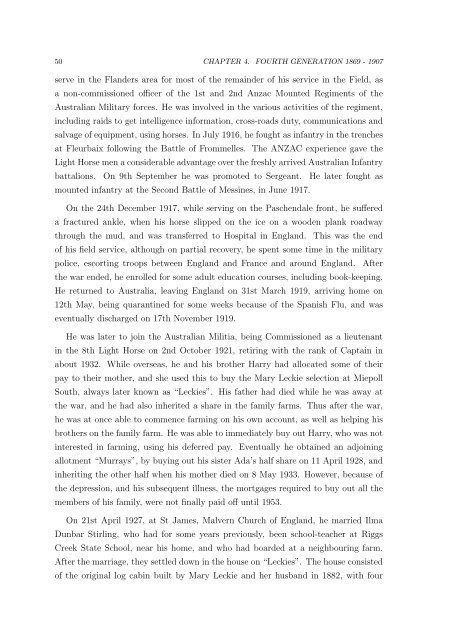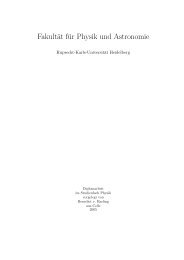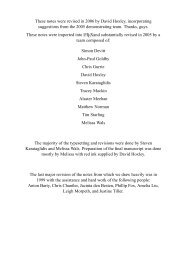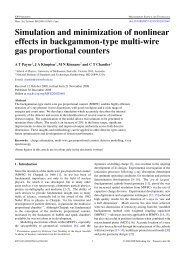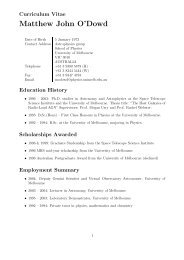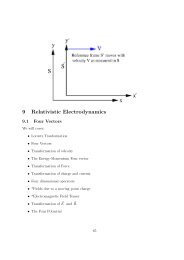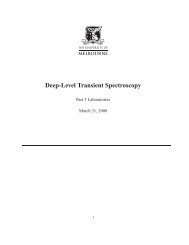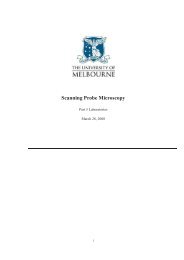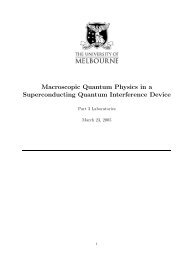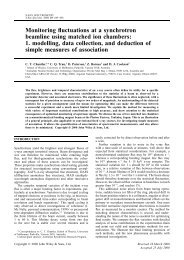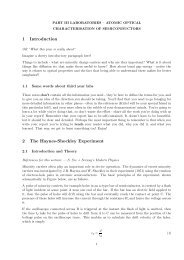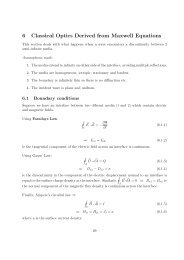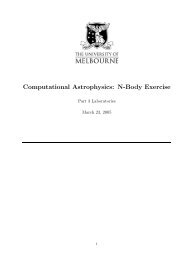the family of james belcher of waterford, ireland - University of ...
the family of james belcher of waterford, ireland - University of ...
the family of james belcher of waterford, ireland - University of ...
Create successful ePaper yourself
Turn your PDF publications into a flip-book with our unique Google optimized e-Paper software.
50 CHAPTER 4. FOURTH GENERATION 1869 - 1907<br />
serve in <strong>the</strong> Flanders area for most <strong>of</strong> <strong>the</strong> remainder <strong>of</strong> his service in <strong>the</strong> Field, as<br />
a non-commissioned <strong>of</strong>ficer <strong>of</strong> <strong>the</strong> 1st and 2nd Anzac Mounted Regiments <strong>of</strong> <strong>the</strong><br />
Australian Military forces. He was involved in <strong>the</strong> various activities <strong>of</strong> <strong>the</strong> regiment,<br />
including raids to get intelligence information, cross-roads duty, communications and<br />
salvage <strong>of</strong> equipment, using horses. In July 1916, he fought as infantry in <strong>the</strong> trenches<br />
at Fleurbaix following <strong>the</strong> Battle <strong>of</strong> Frommelles. The ANZAC experience gave <strong>the</strong><br />
LightHorsemenaconsiderableadvantageover<strong>the</strong>freshlyarrivedAustralianInfantry<br />
battalions. On 9th September he was promoted to Sergeant. He later fought as<br />
mounted infantry at <strong>the</strong> Second Battle <strong>of</strong> Messines, in June 1917.<br />
On <strong>the</strong> 24th December 1917, while serving on <strong>the</strong> Paschendale front, he suffered<br />
a fractured ankle, when his horse slipped on <strong>the</strong> ice on a wooden plank roadway<br />
through <strong>the</strong> mud, and was transferred to Hospital in England. This was <strong>the</strong> end<br />
<strong>of</strong> his field service, although on partial recovery, he spent some time in <strong>the</strong> military<br />
police, escorting troops between England and France and around England. After<br />
<strong>the</strong> war ended, he enrolled for some adult education courses, including book-keeping.<br />
He returned to Australia, leaving England on 31st March 1919, arriving home on<br />
12th May, being quarantined for some weeks because <strong>of</strong> <strong>the</strong> Spanish Flu, and was<br />
eventually discharged on 17th November 1919.<br />
He was later to join <strong>the</strong> Australian Militia, being Commissioned as a lieutenant<br />
in <strong>the</strong> 8th Light Horse on 2nd October 1921, retiring with <strong>the</strong> rank <strong>of</strong> Captain in<br />
about 1932. While overseas, he and his bro<strong>the</strong>r Harry had allocated some <strong>of</strong> <strong>the</strong>ir<br />
pay to <strong>the</strong>ir mo<strong>the</strong>r, and she used this to buy <strong>the</strong> Mary Leckie selection at Miepoll<br />
South, always later known as “Leckies”. His fa<strong>the</strong>r had died while he was away at<br />
<strong>the</strong> war, and he had also inherited a share in <strong>the</strong> <strong>family</strong> farms. Thus after <strong>the</strong> war,<br />
he was at once able to commence farming on his own account, as well as helping his<br />
bro<strong>the</strong>rs on <strong>the</strong> <strong>family</strong> farm. He was able to immediately buy out Harry, who was not<br />
interested in farming, using his deferred pay. Eventually he obtained an adjoining<br />
allotment “Murrays”, by buying out his sister Ada’s half share on 11 April 1928, and<br />
inheriting <strong>the</strong> o<strong>the</strong>r half when his mo<strong>the</strong>r died on 8 May 1933. However, because <strong>of</strong><br />
<strong>the</strong> depression, and his subsequent illness, <strong>the</strong> mortgages required to buy out all <strong>the</strong><br />
members <strong>of</strong> his <strong>family</strong>, were not finally paid <strong>of</strong>f until 1953.<br />
On 21st April 1927, at St James, Malvern Church <strong>of</strong> England, he married Ilma<br />
Dunbar Stirling, who had for some years previously, been school-teacher at Riggs<br />
Creek State School, near his home, and who had boarded at a neighbouring farm.<br />
After <strong>the</strong> marriage, <strong>the</strong>y settled down in <strong>the</strong> house on “Leckies”. The house consisted<br />
<strong>of</strong> <strong>the</strong> original log cabin built by Mary Leckie and her husband in 1882, with four


